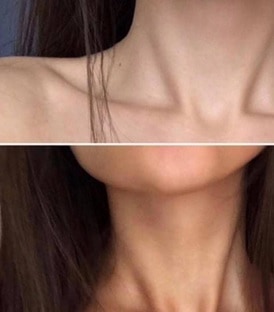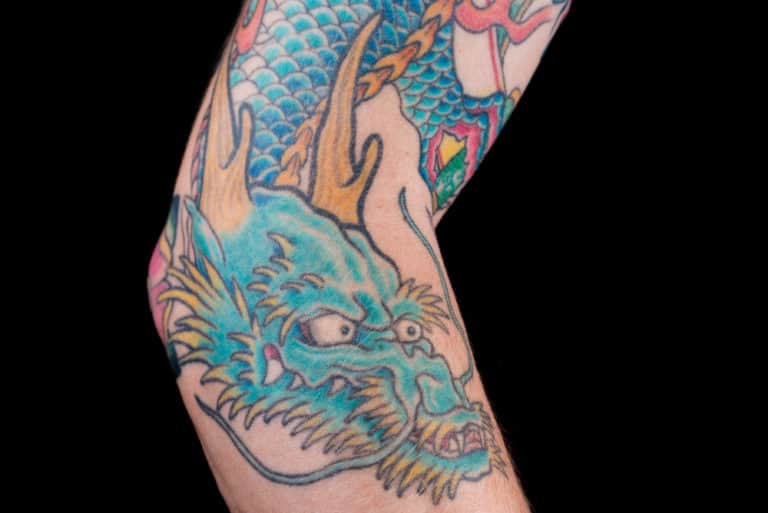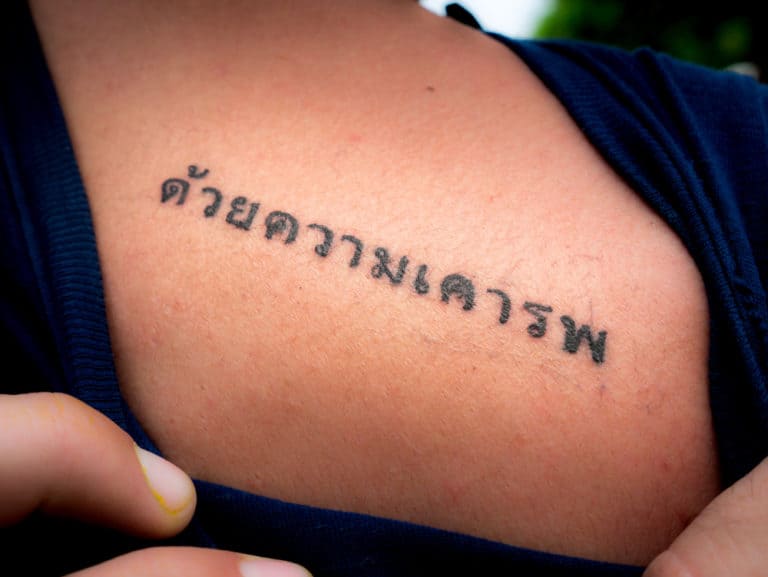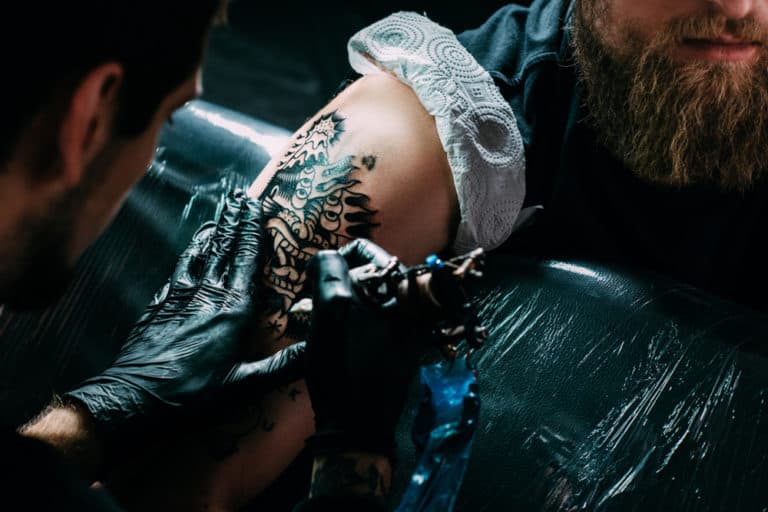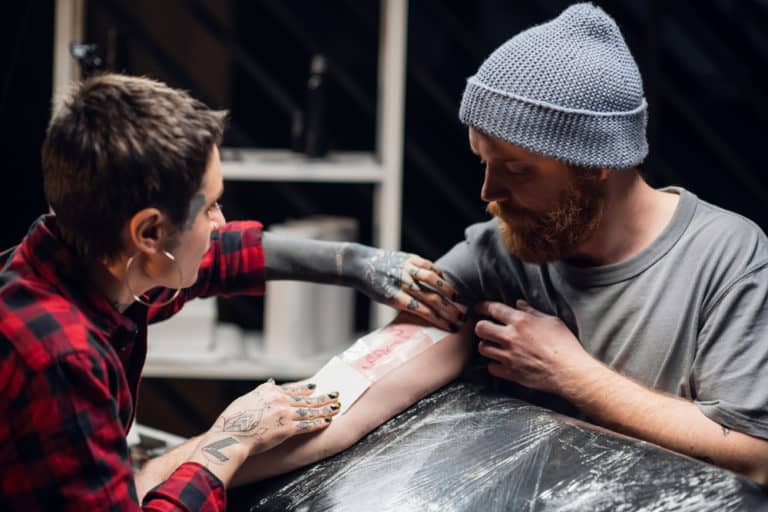Can You Put Fake Tan On A New Tattoo?
Having beautiful bronzed, glowing skin has been associated with beauty and good health for decades. For most people that have a tattoo or several tattoos, fake tan lotions or sprays have become a great alternative to being in the sun. You can achieve a great-looking tan without the damage or the nasty burns. You love to look sun-kissed, but you have a tattoo session coming up, so a good question to ask would be, can you put fake tan on a new tattoo?
You cannot put fake tan on a new tattoo. New tattoos take between 4 weeks and two months to fully heal, so prematurely putting fake tan on a new tattoo can cause infection. Once there is no more scabbing, redness, or swelling visible, the new tattoo has healed, so a fake tan is safe.
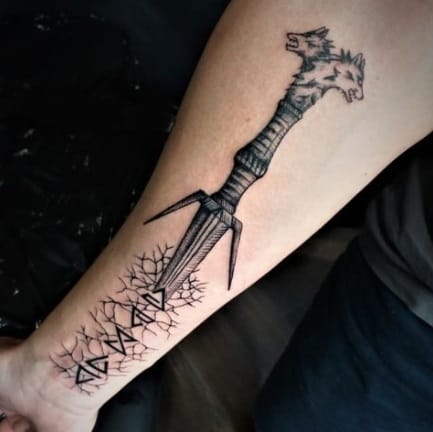
A new tattoo and a fake tan is a good idea to express yourself, but if done at the same time, it can cause infections (one of my works)
Consider seeing your artist for a post tattoo application session to check the tattoo’s healing and quality. Usually, your tattoo artist will advise you as to any further steps to be taken. If they are confident the tattoo has fully healed, you are free to apply fake tan over the newly tattooed area. The fake tan lotion can make some tattoos appear darker, but it doesn’t affect the tattoo color permanently.
What Is Fake Tan?
A fake tan is a lotion or a cream that contains certain chemicals that reacts to your skin when applied; the result is an artificial tan. The main ingredient in most fake tan creams is a chemical called DHA or Dihydroxyacetone discovered in 1920 by a few German scientists while using during an X-Ray session. They noticed that it turned skin brown when accidentally spilled on a patient during one of these sessions.
After further studies during 1950, DHA was considered non-toxic to humans, which was an exciting discovery. This discovery ultimately changed the cosmetics industry significantly as DHA only colors the outer layer of the epidermis’s stratum corneum. The DHA reacts to the individual’s amino acids on the skin surface and produces different color tones known as melanoid.
After much testing of the chemical, during 1970, the FDA added DHA to the list of approved cosmetics. This ruling resulted in a range of fake tan cosmetics hitting the shelves. The convenience of having a tan result overnight was a breakthrough for the beauty industry. Being able to go from pale skin to sun-bronzed in between 8 to 10 hours was irresistible.

How Long Does Fake Tan Last?
The fake tan lotion comes in a variety of strengths. The higher the DHA concentration, the faster it will react to the amino acids on your skin, and the darker the tone will be. Fake tan develops between 8 to 10 hours after application and can last up to 10 days. Reapplication is necessary to keep an even appearance.
Types Of Fake Tan That Are Not Harmful To Tattoos
There are several methods of applying fake tan on your tattoos or tattooed area, below is a list of products usually considered safe. The DHA chemical in these products is not harmful to your tattoos and will not cause permanent discoloration;
- DHA containing lotion. This fake tan application came in a cream, much like ordinary body lotion today. It is easy to apply to the skin and best used to healed tattoo areas.
- Tanning Mousse. A classic method is the tanning mousse, easy to apply and has a quick-drying action.
- Tanning water. Available in a spritz bottle for facial application. Water makes for even application on the face and neck.
- Tanning wipes. One of the most straightforward application methods is the tanning wipes; using a circular motion applies effortlessly and very evenly.
- Tanning supplements. If you want to avoid tanning lotions on your tattoos, taking an oral supplement is an excellent alternative.
- Professional spay booth. If you are not willing to risk self-application, visiting a salon specializing in a fake tan application might be a good idea.
With such various options on the market, it might take some time to test and decide on the best product that will work best for your skin type and not harm your tattoos by a premature application.
Fake Tan And Tattoo Healing Time
A single tattoo or more so several tattoos is life long investment you are making on an emotional and financial level. Tattoos are expensive, and you want to take good care of them and the rest of your skin.
Because people are biochemically different and healing processes differ. Some people might heal fully in 14 days, while others’ tattoos might take two months or longer before the final peel on their new tattoo takes place. For this reason, many artists will not do touch-ups or add anything to the tattoo for up to at least three months after the initial session.

Planning your tattoo session is therefore crucial. You can apply fake tan before you go for a session, with a minimum of a week in between the application and your booked session. Your artist will be cleaning the area with an alcohol solution, and because fake tan only stains the outer layer of skin, it should not affect the ink application in the dermis layer.
Fake Tan Can Cause Skin Infection. Why?
If you apply a lotion to an area of the tattoo that might not have fully healed, even though it appears perfectly fine, the chances of getting an infection are possible. The applications are designed to stay on the skin’s surface. With a new tattoo, the skin is not fully healed, and these chemicals can get under the skin or enter the bloodstream and cause infection or allergic reactions.
I Applied Fake Tan On My Tattoo. Do I Have An Infection?
Some signs usually accompany a skin infection and need to be attended to as soon as possible;
- Fever. A raised body temperature is usually the first sign that your body is fighting an infection of sorts. Anything over 102 degrees needs attention.
- Hot and cold flushes. Suppose you start feeling hot flushes and cold shivers that is your hypothalamus in the brain responding to the fever trying to regulate your body temperature.
- Raised skin tissue. The infected area will appear raised more than the skin area around it.
- Heat on the skin. The skin area will feel hot to the touch.
- Red lesions around the skin. Red skin lesions or markings might start to appear around the tattooed area that is infected.
- Pus or liquid draining. If you start noticing any liquid or pus draining from your tattoo area, that would be an indication of an infection.
- Shivers. If you start having abnormal shivers, goosebumps, and fever, you most likely have an infection.
There is the chance you might get a bacterial infection called methicillin-resistant staphylococcus aureus (MRSA) or commonly called Staph infection. Staph is a severe condition that requires medical attention. If you are unsure, please consult your tattoo artist, primary caregiver, or go to your nearest ER.
Fake Tan or Sun Tan For Tattoos?
The effects of being in the sun for prolonged periods is evident as we get older. Wrinkles and sunspots can start appearing in various places. When you have many tattoos, you will want to take more care of your skin than usual, as overexposure to the sun can cause tattoos to fade or bleed ink. That makes the tattoos look old, and the black ink can fade to a blue or greenish hue.
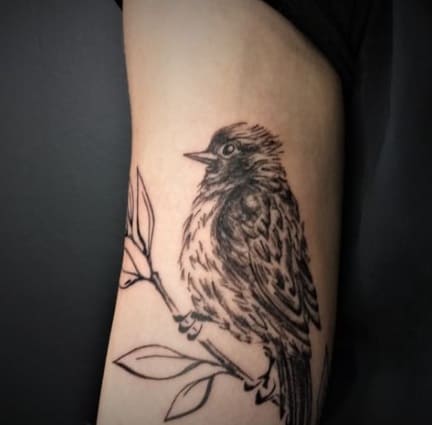
While the health benefits of getting sufficient Vitamin D cannot be stressed enough, doing it in a way that doesn’t harm your skin or tattoos is vital. Just like fake tan, direct sunlight on new tattoos is not desirable. You should always apply excellent sunscreen after the healing process before you venture out into the sunlight.
UV rays are particularly harmful to the skin; for that reason, sunbeds can also harm your skin and fade your tattoos over time. If you want to use a sunbed for tanning, you also need to apply the correct sunscreen to your existing tattoos.
Conclusion
While fake tanning lotion, mousse, or sprays are not usually harmful to existing tattoos, applying it to new tattoos that have not fully healed carries certain risks. Once your tattoo has fully healed, you can apply fake tan over the area without issues. Modern DHA containing fake tan cosmetics has been tested in various scenarios and are considered safe to use for most. Being well informed allows you to take the best course of action, and that would be to plan your tanning needs and tattoo session so that your skin health is never compromised.

